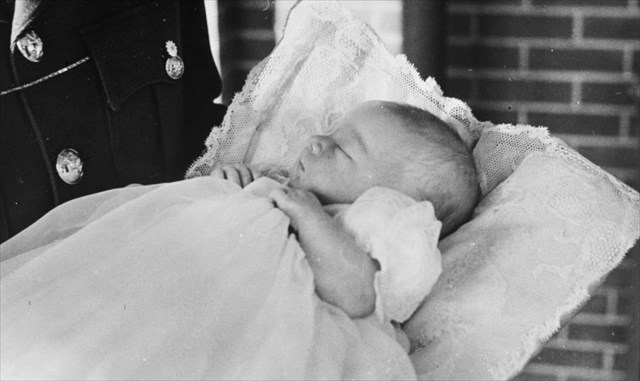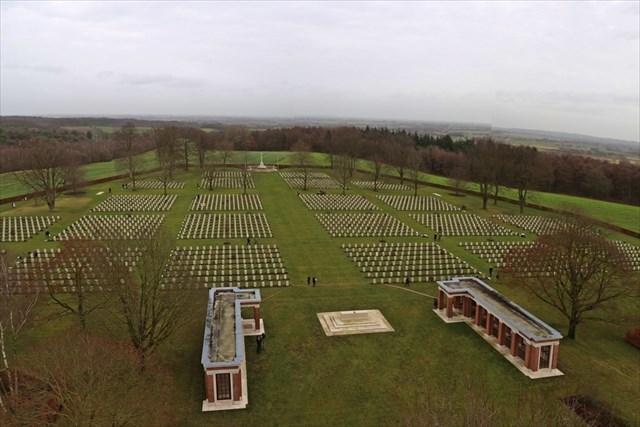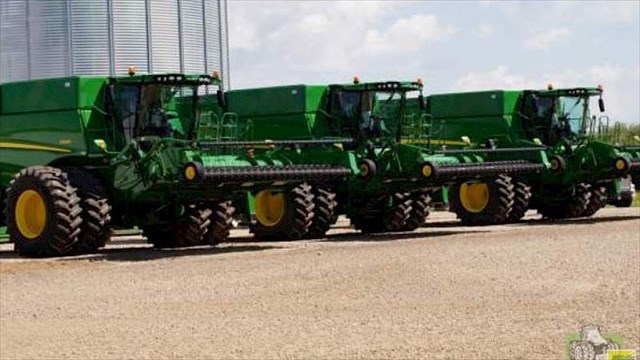For English, see below
Nederland en Canada liggen aan weerszijden van de Atlantische oceaan maar hebben een speciale band met elkaar. Hoewel Canada immens groot is (240x Nederland) en Nederland maar klein zijn er toch vele overeenkomsten. Zo is het aantal inwoners van Canada maar iets meer dan 2x dat van Nederland. En waar Nederlanders Canadezen vaak zien als wat losser en vriendelijker dan Amerikanen, zo worden Nederlanders door Canadezen bovengemiddeld sympathiek gevonden vergeleken met andere Europeanen als Engelsen en Fransen. En zo zijn er nog wel meer bijzondere banden tussen beide landen.
De Canadese prinses

Na de capitulatie in 1940 vluchtte de Nederlandse koninklijke familie naar Canada. Op 11 juni 1940 kwam kroonprinses Juliana met haar dochters aan in Halifax. In 1943 werd prinses Margriet geboren in Ottawa. De kamer in het ziekenhuis waar zij werd geboren werd tijdelijk extraterritoriaal gebied verklaard, opdat zij niet automatisch de Canadese nationaliteit verkreeg.
De Canadese bevrijders

Canadese troepen speelden een belangrijke rol bij de bevrijding van Nederland. Vrijwel het gehele noordoosten van Nederland (Veluwe, Achterhoek en de provincies Overijssel, Drenthe, Friesland en Groningen) is door Canadezen bevrijd. Diverse Nederlandse meisjes kregen een relatie met een Canadese soldaat. "Trees heeft een Canadees" is een bekend liedje uit die tijd. De meeste Canadese militairen die sneuvelden in Nederland zijn begraven op de militaire begraafplaats in Groesbeek.
Boeren in Canada

Na de Tweede Wereldoorlog moest Nederland opnieuw worden opgebouwd. Landbouw werd steeds grootschaliger georganiseerd, wat in het ook toen al volle Nederland niet altijd even makkelijk viel te organiseren. Veel boeren trokken daarom richting Canada, waar ruimte in overvloed is om hun bedrijf uit te oefenen. De bekendste Nederlandse boer die naar Canada is vertrokken is Evert van Benthem. Deze veehouder uit Sint-Jansklooster won in 1985 en 1986 de Elfstedentocht. Sinds 1999 woont en werkt hij in Canada.
De Schaatscanadees

Toen Evert van Benthem naar Canada verhuisde was hij al een tijd gestopt als schaatser. Dat geldt niet voor Ted-Jan Bloemen, een Nederlandse schaatser met talent die in eigen land te maken had met moordende concurrentie. In 2014 verhuisde hij naar Canada en komt sindsdien uit voor dat land. Dit was mogelijk omdat zijn vader ook de Canadese nationaliteit heeft. Uitkomend voor Canada ontwikkelde hij zich tot een geduchte concurrent van de Nederlandse schaatsers, wat hem 6 medailles op de WK afstanden en 2 Olympische medailles opleverde.
De cache
Deze cache is een samenwerkingscache (ook wel collaboration cache of CoCa genoemd). In Halifax in de Canadese provincie Nova Scotia ligt GC9GW5J-Canadian Dutch Friendship. Die cache bevat aanwijzingen om deze cache in Nederland te vinden, en andersom.
Om deze cache te vinden moet je het volgende doen:
- Bezoek de 4 waypoints die onderaan de listing staan vermeld en vergaar de informatie
- Reis naar Canada en bezoek GC9GW5J, waarbij je tevens de informatie krijgt om deze cache in Nederland te vinden. Omdat dit nogal omslachtig is een alternatief: plaats een Write Note bij GC9GW5J waarin je aangeeft dat je over de informatie beschikt om de Canadese cache te vinden en dat je in contact wilt komen met een geocacher om de informatie uit de Canadese cache te krijgen. Natuurlijk kun je ook reageren op een Write Note die een Canadese cacher bij deze Nederlandse cache heeft geplaatst.
- Als het goed gaat kom je in contact met een cacher in Canada, die je de coördinaten en slotcode voor deze cache zal verstrekken.
- Met de gevonden informatie kun je de Nederlandse cache loggen. De moeilijkheidswaarde is met name gebaseerd op de samenwerkingscomponent.
Cross logging
Wij stellen ons op het standpunt dat je een cache pas hoort te loggen als je hem fysiek bezocht hebt. Wat ons betreft betekent het loggen van deze cache dus niet automatisch dat je de Canadese cache ook mag loggen (en andersom). Uiteraard geldt nog steeds: je naam in het logboek = geldige log, daar kunnen wij als CO niets aan doen, maar onze intentie moge duidelijk zijn.
Verder: Wees sportief! Wissel de coördinaten en slotcode niet onderling uit, en vraag deze ook niet op bij cachers die de Canadese cache al gevonden hebben. Ga je uitsluitend voor het 'puntje', laat deze cache dan gewoon liggen.
Deze cache en een deel van de waypoints zijn geplaatst in een natuurgebied waar het soms flink modderig kan zijn. Goede wandelschoenen of eventueel laarzen zijn aanbevolen. Bezoek het gebied uitsluitend tussen zonsopgang en zonsondergang. Honden zijn i.v.m. de loslopende schapen niet toegestaan, ook niet aan de lijn.
Parkeren kan op de parkeerplaats van het Fort bij Asperen of in Asperen zelf, zie de aangegeven parkeercoördinaten. Parkeer zeker niet op de dijk!
Deze geocache is geplaatst met toestemming van Staatsbosbeheer, waarvoor hartelijk dank.

English
Although the Netherlands and Canada are separated by the Atlantic Ocean, both countries have a special bond. Canada is an immensely large country (240x the Netherlands), and the Netherlands are small, but still there are many similarities. The number of inhabitants of Canada, for example, is only twice of that of the Netherlands. And where the Dutch often see Canadians as more relaxed and more friendly than Americans, the Dutch are considered by Canadians above average sympathetic compared to other Europeans like the Brittish and French. And there are more special relationships between both countries.
The Canadian princess

After the German invasion in 1940 the Dutch royal family took refuge in Canada. On June 11 1940 crown princess Juliana arrived together with her daughters in Halifax. In 1943 princess Margriet was born in Ottawa. Her hospital room was temporarily declared extraterritorial area, so she didn't automatically get the Canadian nationality.
The Canadian liberators

Canadese troops played an important role in the liberation of the Netherlands in the Second World War. Almost the entire northeastern half of the country (the Veluwe and Achterhoek regions in the province of Gelderland and the entire provinces Overijssel, Drenthe, Friesland en Groningen) was liberated by Canadians. Various Dutch girls had a relationship with a Canadian soldier. "Trees heeft een Canadees" (Theresa has a Canadian) is a well known song from that time. Most Canadian soldiers who died in the Netherlands were buried at the Groesbeek War Cemetery.
Farming in Canada

After the Second World War the Netherlands had to be partially rebuilt. Farming took place at a continuously larger scale, which was difficult in the Netherlands, in those times already a densely populated country. Many farmers moved to Canada, where there was ample space to run their business. The most famous Dutch farmer that moved to Canada is Evert van Benthem. This livestock farmer from Sint-Jansklooster was a long distance speed skater and won the most famous Dutch speed skating race Elfstedentocht (200 km) twice, in 1985 and 1986. Since 1999 he has been living and working in Canada.
The speed skating Canadian

When Evert van Benthem moved to Canada he had already terminated his speed skating career. That was different for Ted-Jan Bloemen, a talented Dutch speed skater who faced fierce competition in his own country. In 2014 he moved to Canada and since then has been competing for that country. This was possible because his father also has Canadian nationality. Skating for Canada he developed himself into one of the world's best speed skaters. Upto now he has won 6 World Cup medals and 2 olympic medals.
The cache
This cache is a collaboration cache (or CoCa). In Halifax in the Canadese province of Nova Scotia you'll find the cache GC9GW5J-Canadian Dutch Friendship. That cache provides instructions to find this cache in the Netherlands, and vice versa.
To find this cache you should do the following:
- Visit the 4 waypoints mentioned below in the listing and gather the information
- Travel to Canada and visit GC9GW5J. That's quite troublesome, but there is a practical alternative: Place a Write Note at GC9GW5J in which you indicate that you have found the information to find the Canadian cache and you would like to get into contact with a geocacher to provide you with the information from the Canadian cache. Of course, you can also respond to a Write Note placed by a Canadian geocacher on this Dutch cache.
- If everything goes well you will get into contact with a geocacher in Canada who will provide you the coordinates and lock code for this cache.
- WIth this information you can find the Dutch cache. The D-rating is based mainly on the collaboration aspect.
Cross logging
We take the position that you should only log a cache if you have actually visited it. Logging this cache hence doesn't imply permission to log the Canadian cache (and vice versa). Of course your name in the logbook still means a valid log (by definition), there's nothing we can do about that, but our intention should be clear.
Be sporty! Don't share the coordinates and lock code with others and don't ask for them at cachers who have already found the Canadian cache. If you're just interested in the 'smiley', please skip this cache.
This cache and some of the waypoints are placed in a nature area which can be quite muddy. Good hiking shoes or boots are recommended. The area is only accessible between sunrise and sunset. Dogs are not allowed (not even on a line) because of the sheep running loose.
Parking is possible at the parking place of Fort bij Asperen or in Asperen itself, see the provided parking coordinates. By no means park on the dyke!
This geocache was placed with permission from Staatsbosbeheer, for which we are grateful.
